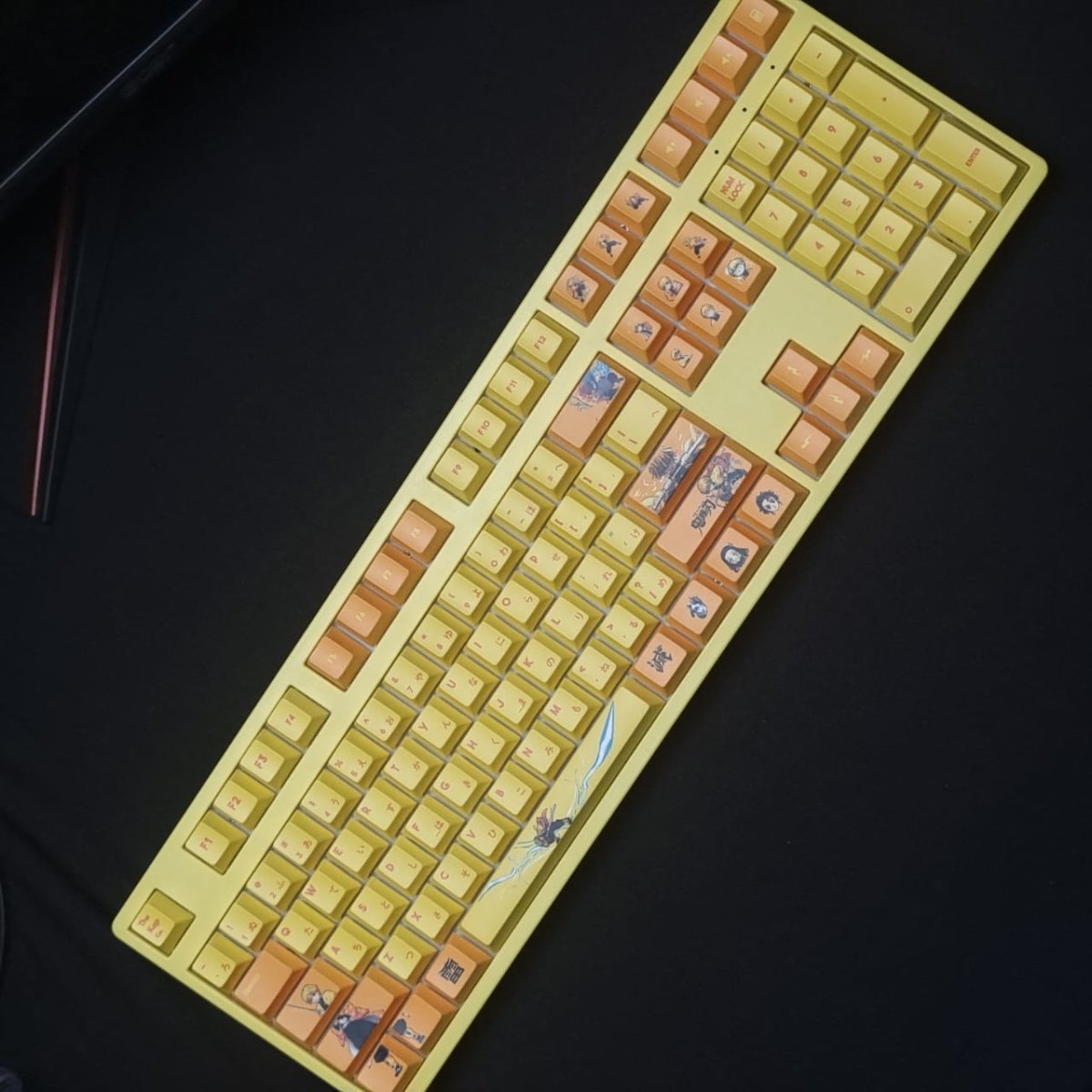ANSI & ISO layouts: What's the difference?
Whether you're a newcomer to the world of keycaps or an experienced wizard of mechanical keyboards, you're bound to stumble upon the question asking: "Are you using ANSI or ISO Layout?"
In a nutshell, ANSI and ISO are acronyms for two standard keyboard layouts. The former stands for American National Standards Institute, while the latter stands for International Organization for Standardization. At first glance, they may appear similar as their differences do not concern the logical layouts of QWERTY, but rather minor variances in the size and arrangement of the Enter key, Backslash, and Left Shift keys.

Kyoto Keycaps designed for ANSI layout
While these differences may seem insignificant, they are crucial to consider before purchasing any after-market keycaps. Knowing which keyboard layout you have will ensure that you choose compatible keycaps that will fit your keyboard like a glove.
Especially if you're a new-come to the mechanical keyboard world, taking the time to understand the differences between ANSI and ISO will save you from headaches and compatibility issues down the road. Additionally, you can learn more about keycaps from this comprehensive guide!
Key Difference of ANSI vs ISO Layout
| Feature | ANSI | ISO |
|---|---|---|
| Enter Key | Single-row wide, positioned above the Right Shift key. | Two-row wide, positioned to the left of the Right Shift key. |
| Backslash Key | Located above the Enter key. | Located to the left of the Z key. |
| Left Shift Key | Smaller, positioned to the left of the Z key. | Larger, positioned to the left of the Z key. |
| Supported Countries | Primarily used in the United States and other English-speaking countries. | Used in most European countries, as well as in other non-English speaking countries. |
| Compatibility | Compatible with most keycaps and keyboard accessories available in the market. | Keycaps and keyboard accessories are less widely available compared to ANSI layouts. |
| Typing Speed | May offer a slight advantage in typing speed due to the shorter Left Shift key and more centralized Enter key. |
May offer better typing accuracy due to the larger Left Shift key and two-row Enter key. |
Key features of ANSI vs ISO
The most noticeable difference between ANSI and ISO layouts is in the placement and size of certain keys. For example, the Enter key, Backslash key, and Left Shift key are all positioned differently on ANSI and ISO keyboards. On ANSI keyboards, the Left Shift key is one large rectangular key, while on ISO keyboards it is split into two separate keys. The Enter key on an ANSI keyboard is shaped like an upside-down L, while on an ISO keyboard it is a taller rectangular key.
Another difference is that ISO keyboards often have an additional key called the Alt Graph key, which allows users to access a third symbol on a key. This is particularly useful for typing in other languages. On keys with four symbols, the fourth symbol can be accessed by pressing Shift and Alt Graph.
Is ISO better than ANSI?

Graph of ANSI vs ISO layout
There are pros and cons to ISO and ANSI keyboard layout, but it ultimately boils down to your preferences. However, these key differences can actually affect your typing experience.
- Enter key: The Enter key is further away from the home row on ISO keyboards compared to ANSI keyboards, which can cause ergonomic issues. On ANSI keyboards, the pinky only needs to reach over one key to press Enter, whereas on ISO keyboards it must jump over two keys.
- Backslash: The backslash key is now closer on the ISO layout, but it is rarely used in daily typing. It is typically only used for programming to type file paths in the Command Prompt or terminal window.
- Left Shift Key: It is split into two on an ISO keyboard, which means it is about 1 inch away from its usual position. The extra key could be symbols that are not commonly used in everyday typing. This could be problematic because if you're used to pressing the right side of the left shift key on an ANSI keyboard, you might accidentally press that extra key often if you're using an ISO keyboard.
- ANSI & ISO after-market keycaps: Most after-market keycaps are made using ANSI layout. However, you may still be able to find keycap sets that include extra keys for your ISO layout, but they usually come with a higher price tag. For example: Keycaps collection in The KapCo are usually in ANSI layout.
Quick mention to JIS Layout

In 1986, the Japanese Ministry of International Trade and Industry created the JIS keyboard layout to standardize computer keyboards in Japan. The layout is designed to make it easier for Japanese people to type on a computer by including keys for Japanese characters. It has an upside-down L-shaped Enter key, split right Shift and Backspace keys, and three extra keys in the spacebar area. (Look similar to ISO layout!)
The JIS layout is now the standard for computer keyboards in Japan and is used on many different devices.
Key takeaway
- The differences between ANSI and ISO layouts concern the size and arrangement of the Enter key, Backslash, and Left Shift keys.
- Most after-market keycaps are made using ANSI layout.
- Ultimately, it's up to your preference!

